Kitchen of the Jongga
A kitchen utilized by our ancestors for generations is indeed a living museum keeping cracked or chipped porcelain bowls, slightly smashed nickel silver pots, brass vessels, a fire poker, etc. The kitchen of the jongga is not an exception. At present the fire in the fireplace has been gone out and smoke does not rise any more from the chimney, but those kitchen utensils are keeping their positions as before. Devoted efforts of the descendants allowed them to be well preserved although some of them are flawed and look humble.

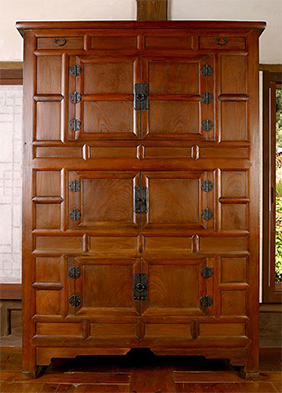
Three-Storied Pantry Cabinet
52.5×116.5×168.7cm
The pantry cabinet used to be located side by side with a grain box on the kitchen floor, and was one of household necessaries that the eldest grandson and his wife ever used. From top to bottom, this cabinet was good for keeping not only vessels but also various condiments. Its structure and decorations are exquisite and solid.
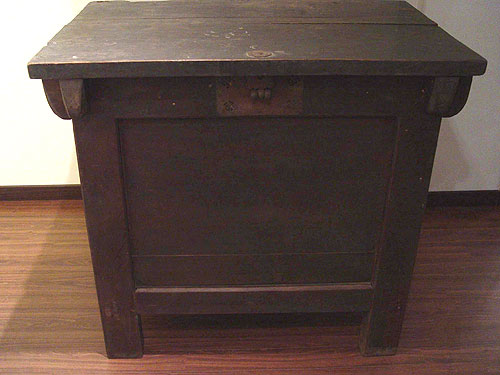
Grain box
109.4×71.6×103cm
The grain box was used for storing rice. The grain box may have been opened innumerable times by the householders for daily meals and events, but the frequency of its opening may have varied with the householder's propensity to expenditure. Although the lock does not remain, it looks as though it were full of rice.
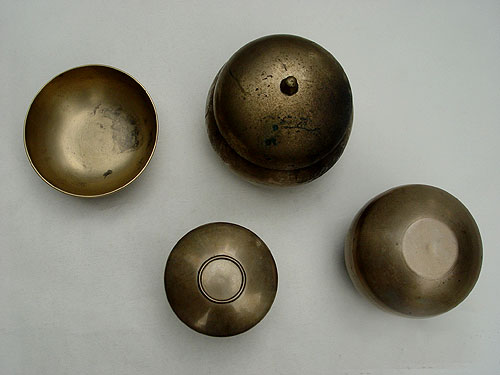
Brass Vessels
Top left 12.5×13.5cm, right 12.9×4.6cm, Bottom left 9.6×8cm, right 11×5.7cm
No utensils need user's devotion more than brass ones because only housewife's devotion can make brass utensils durable and functional. Although rust had eaten into it, the brass vessels still display their classical beauty.
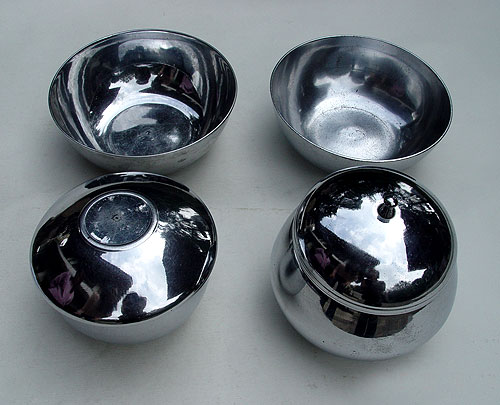
Stainless-Plated Brass Vessels
Top left 13.4×10.5cm, right 13.4×14cm, Bottom left 16.4×6.6cm, right 16.2×6.5cm
These are the brass vessels that were coated with stainless steel around 1965.
Since it is so hard to keep their own color, brass utensils should be polished laboriously with roofing tile powder and rice straws. The grandaunt-in-law of Ham Geumja (the director) personally took the brass vessels to a shop out of the Dongdaemun for plating and brought them back home in reward of the diligent manner of Ham Geumja who diligently polished and used the brass vessels with no complaints. The affection of elders of the jongga and one aspect of the contemporary life are incorporated in the vessels.
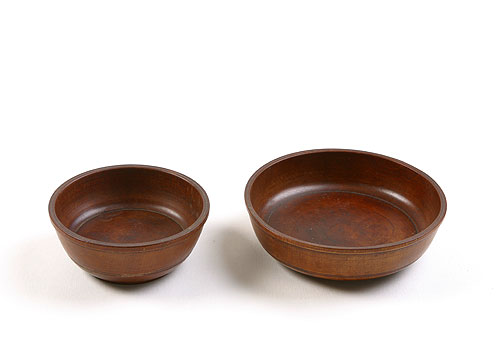
Wooden Vessels
Left 13×5.3cm, Right 16.7×5cm
These wooden bowls are what the eldest grandson's wife used for serving snacks such as dasiks ("pattern-pressed cake"), gangjeongs ("rice candy"), and yakgwas ("honey cake") to the elders. The wooden vessels, each of which was made of a piece of wood, are seamless and unadorned so that they look plane and elegant. However, it is replaced by light plastic bowls of diverse shapes, so hardly are wooden vessels seen these days.
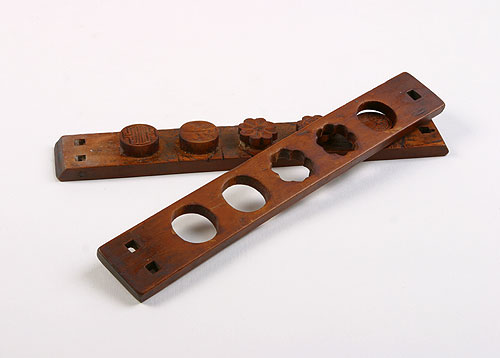
Pattern-Pressed Cake Board
33.2×5.2×2.6cm
This is the only pattern-pressed cake board left in the jongga, which was used for the first birthday parties of the four children of the thirteenth-generation eldest son and his wife. It produced five different patterns at once and so added affluence to the parties. There is no board but this one in the jongga, so it is a very precious thing. Recently this board was replaced by a new one from the market for the sake of preserving the old board. By using a new board, the eldest grandson's wife still serves pattern-pressed cakes along with teas.
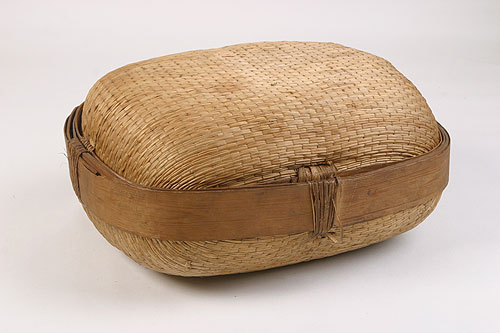
Wicker Trunk(籃)
45.0×35.0×20.0cm
This is a wicker trunk for food. At the time of a big family event, the wicker trunk was used for keeping foods such as rice cakes or wheat-gluten candies, especially ibaji ("contributing food to another family’s party") food in the jongga. After family events, distributing the foods made wholeheartedly to family members and relatives is virtue of the eldest grandson's wife. The contents of food trunk sent outside as ibaji food may have comprised more devotion and neatness of the eldest grandson's wife since it was thought to show what the family is.
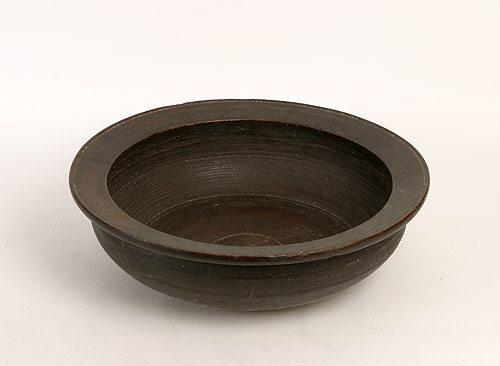
Large Scooped Wooden Bowl
40.8×12.5cm
This large scooped wooden bowl was used to fill a large quantity of food such as grains or vegetables, always kept at householders’ hand. It is useful for receiving rice powder-mixed water passed through a sieve or keeping dry food, but it is very difficult to take care of these bowls as much as brass vessels.
















